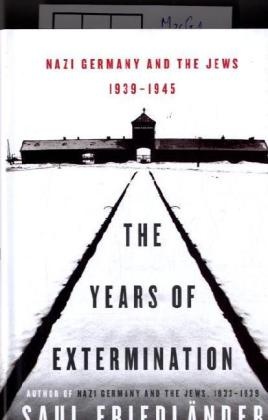Ulteriori informazioni
Informationen zum Autor Born in Prague, Saul Friedländer spent his boyhood in Nazi-occupied France. He is a professor of history at UCLA, and has written numerous books on Nazi Germany and World War II. Klappentext With The Years of Extermination , Saul Friedländer completes his major historical work on Nazi Germany and the Jews. The book describes and interprets the persecution and murder of the Jews throughout occupied Europe. The enactment of German extermination policies and measures depended on the cooperation of local authorities, the assistance of police forces, and the passivity of the populations, primarily of their political and spiritual elites. This implementation depended as well on the victims’ readiness to submit to orders, often with the hope of attenuating them or of surviving long enough to escape the German vise. This multifaceted study—at all levels and in different places—enhances the perception of the magnitude, complexity, and interrelatedness of the many components of this history. Based on a vast array of documents and an overwhelming choir of voices—mainly from diaries, letters, and memoirs—Saul Friedländer avoids domesticating the memory of these unprecedented and horrific events. The convergence of these various aspects gives a unique quality to The Years of Extermination . In this work, the history of the Holocaust has found its definitive representation. Zusammenfassung An authoritative and magisterial survey on the Holocaust by one of the world’s leading experts “A masterful synthesis that draws on a lifetime of learning and research.” —Publishers Weekly (starred review) The extermination of the Jews triggers disbelief. This volume presents a thorough historical study of the events that extends beyond the usual analysis of German policies, decisions, and measures that led to this most systematic and sustained of modern genocides. It includes the reactions of the surrounding world—authorities, populations, churches, social elites—related facets of everyday life throughout the continent, and their individual expressions. The history of the victims is an intrinsic part of this overall context; their attitudes found expression in both collective responses and individual testimonies. Here, the individual voices are weaved into the narrative and are the main carriers of disbelief: Some of them end in liberation; most are cut short by extermination. ...

